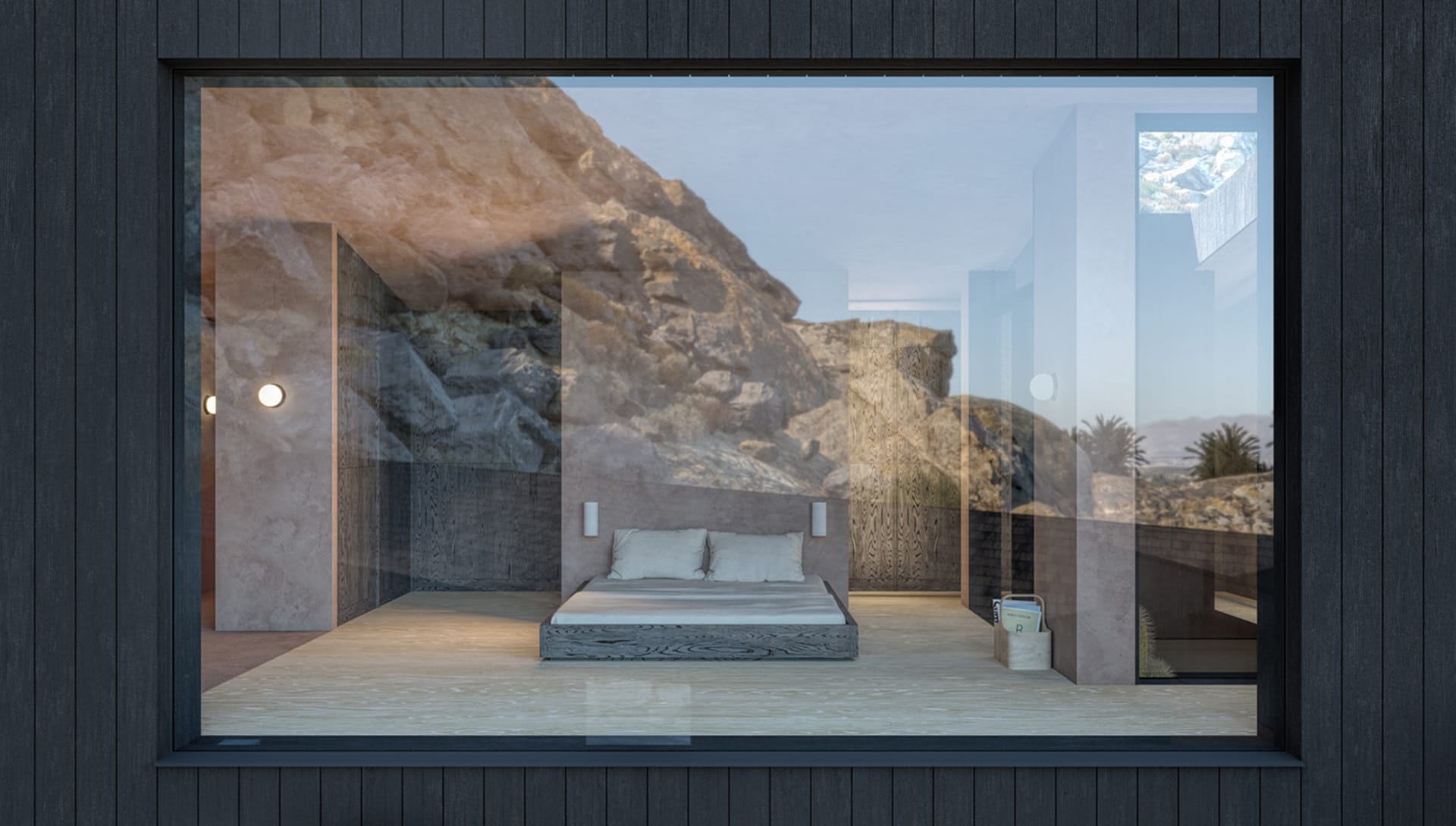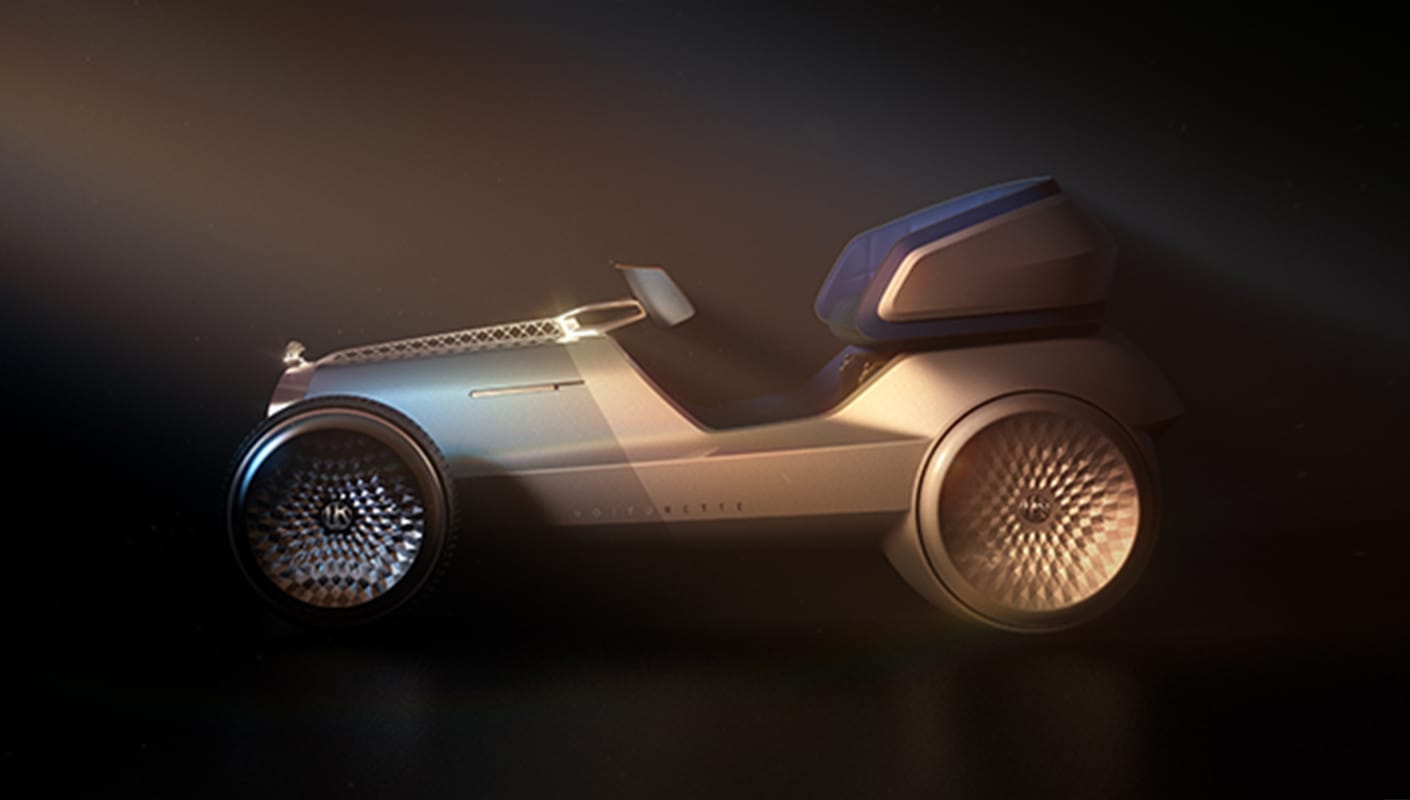Discover how V-Ray for SketchUp joined forces with Archilime to visualize a stunning sustainable home.
Jack Dicker, Managing Director, and Daniel Stone, Head of Operations at Archilime share their view on what ensures successful collaboration and how the harmony between Koto Design’s sustainable prefabricated home design, along with the rendering power of NVIDIA RTX GPUs and V-Ray for SketchUp running on a Lenovo P1, all resulted in a compelling visual story that is nothing short of amazing.
Watch the video below to see the Palm Springs project unfold in action, then keep reading to get a deeper understanding of the process and people behind it.


Can you share how the concept of the Palm Springs project was born and what led to the collaboration?
Aesthetically, it’s clear to see that Koto Design is a master of the art of crafting beautifully sculptural homes that sit in sync with their surroundings. When we got the opportunity to collaborate with them on a project in Palm Springs, CA, we relished the opportunity to visualize one of their iconic designs.
For this project, the team at UK-based Koto Design used SketchUp as a tool in their early design concept stage, allowing them to develop the 3D forms remotely over online video calls with their client based in California. After several design iterations, we were introduced to begin adding detail to the conceptual SketchUp model, which became a seamless transition into the refinement stage as we are big SketchUp users ourselves.
Given the sleek, modern design; Koto were able to offer us an abundance of reference imagery and architectural sketches to ensure that their Japanese-Scandinavian-inspired home came to life within our images and animation. The gardens were crafted by influential landscape architect, Steve Martino, who is renowned for his work with desert landscapes.

Technology has advanced to allow artists to work together on a diverse range of projects regardless of location. What factors are important to keep in mind in order to ensure a seamless workflow and effective communication when working with professionals from around the world?
As with any form of communication, there needs to be a common language. Collectively on this project, our ideas and design intent were communicated using SketchUp model and CGI reviews, or even live Vantage workshops during our online design review meetings. This goes to show that regardless of the location of a project, there are now interactive design tools that are used by professional studios to overcome distances that historically would be difficult factors to overcome.

Can you explain the different stages in the buildup of the scene’s environment?
Typically, we find that visualization projects fall may fall into two categories; those with a finalized design, and those that will undergo a degree of design development during the visualization process — Palm Springs was more of the latter.
To build a base upon which to discuss design details and iterative development, we used Koto’s concept SketchUp model and reference material to develop the ‘massing’ of the main structure and its immediate environment. Once the initial positioning and forms had been resolved during interactive rendering sessions, we progressed to add topography and some further detailing to our SketchUp model.
Considering the weather conditions in Palm Springs; careful emphasis was placed on how the building was to be designed around the passage of the sun throughout the day and year to optimize solar shading and maximize airflow. Geolocating our SketchUp model and hosting interactive render solar studies ensured our model was a perfect mirror of the site, informing Koto and the client in the design development process. Once resolved, we opted to use the sun as the protagonist in our architectural animation, tracking its movement throughout the day as it interacts with this beautiful home.
Once our lighting was resolved, the next step involved creating and importing photorealistic materials to be applied to our model, including several Chaos Scans throughout the scene (can you spot them?).

What is the most important thing to keep in mind in order to achieve powerful visual storytelling?
To tell a story, the viewer has to feel fully transported into the world that you are showing them. As visualizers, this means ensuring that your work contains a nice blend of microscopic detail and macroscopic context to ensure that the key messages are communicated effectively.
Spending more time working on a specific material that will be captured up close is time well-spent, as it builds congruence between the viewer and the narrative of high quality that you are looking to share.
Equally important is ensuring that your wider scale context has been addressed. Developing the hillsides beyond the site could have been avoided to save time, but we felt it essential in giving the audience an understanding of how the home is so well integrated into its environment.
We advocate for the creation of ‘paper edits’ or storybooks to map out how you would like the viewer to journey through the site. Primarily used in filmmaking, these are used to convey the brand, message, and mood of an animation or film before the rendering stage.

The attention to detail in the interior is amazing. Can you explain the process of creating tangible textures on every surface?
With the textures implemented for this project specifically, we were able to use Poliigon textures for the entire project, apart from the roof tile material that we created ourselves and the rocky terrain that we displaced from an old Grant Warwick pack of ‘ground’ textures.
Each texture came with full high-resolution specular, normal, displacement, and reflection maps that we were able to place into the relevant bitmap slots and start testing the scene.
The collaboration and consultation between Archilime and KOTO design helped us understand the end goal in regard to the mood and styling of the final output. This design had to showcase each beautiful raw material in the best light, right down to the roughness of the plaster that can be seen on the interiors to the ‘Shou sugi ban’ exterior cladding - a traditional Japanese practice where cedar is charred, to preserve the wood, giving it more longevity and durability. With this very rough, burnt matte black-silver finish we needed to really customize the maps and bring them to the right roughness seen in the renders.

Can you share how V-Ray 6’s Enmesh helped to create the Gabion walls in the exterior?
The gabion walls are a prime example of Enmesh. The cage that contains the stone presented the perfect opportunity to experiment with different options.
After creating a couple of 3D patterns and applying Enmesh to the grouped boxes which surround the stone, we have the ability to control how the 3D patterns are tiled on our chosen surfaces.
In the past, we would have modeled this before likely creating proxies. However, Enmesh now gives us an opportunity to experiment with several different options and tweak the distributions whilst keeping our SketchUp scene light and optimized.

What was the most challenging aspect when creating the lighting and how was it solved?
This project presented unique lighting challenges. We needed to respect the position of the sun in relation to the site, so geolocation was required to ensure that the sun paths were correctly positioned. This means that we were locked into using the V-Ray ‘Sun and Sky model’, which allowed for accurate shadows, but relatively uninspiring skies … until the launch of V-Ray 6’s procedural clouds. These allowed us to add interest to the sky whilst also preserving the sun’s position.
Whether adding light cirrus clouds or denser cumulus clouds - we found this new feature to be very intuitive and easy to use.
Another cool feature is the dynamic clouds option, which gives us the capability to animate the sky, which is a technique used to create more natural and realistic sky conditions within our V-Ray scenes.

Archilime Academy offers an amazing 12-week V-Ray for SketchUp Masterclass which starts from teaching how to produce conceptual ideas all the way up to making a marketable 3D visualization. The Palm Springs project is the basis for this masterclass. Can you tell us a bit more about what students can achieve?
Essentially, we want to be able to train anyone to be able to produce high-quality, photorealistic visualization like us by understanding their business model, adapting companies' efficiencies, and putting better structure and process in place to ensure they are capitalizing on the profit of a new service. We don't just teach people to build visualization, we show them how to use it within a business environment just like we do at Archilime Visualisation and showcase at the Archilime Academy.
If you’ve been wanting your 3D design skills and design processes to deliver more value for your business or your career, our V-Ray for SketchUp Masterclass could be just what you’re looking for.
These tools can help interior designers create lighting or materials studies or explore 3D furniture layouts. They can help landscape architects visualize planting schemes or create accurate topographical 3D models and they can help Set Designers create immersive sets in 3D and realistic concept images that tell your story.
And that’s far from all. As 3D artists ourselves, we know that there are always new techniques to learn and existing processes that can be streamlined. But we also know that better 3D output can do a lot for you and your business. Especially if the way you improve those skills is designed to fit in around and support your existing workflows.
This isn’t the sort of V-Ray for Sketchup training where you or your team member needs a lot of time off. Instead of distracting from your daily work, our V-Ray for SketchUp masterclass is designed to fit in around and support your ongoing creative projects, be it designing an architectural structure in 3D, better visualizing your latest set design, delivering a Land and Visual Impact Application, or offering a series of conceptual design options as an interior designer, it could all be done in a much more persuasive way.
Your team can continue with real-world projects while they study. In fact, they’ll do so with their course mentor – as well as the very engaged wider Archilime Academy community – on-hand to talk everything through.
The masterclass takes place over 12 weeks, with a half-day webinar per week and ongoing course material, empowering you or your team to slot it into existing workflows. This makes it an easy way to invest in yourself and your team and grow your offering without interrupting your day-to-day. You can find out more by signing up here.




